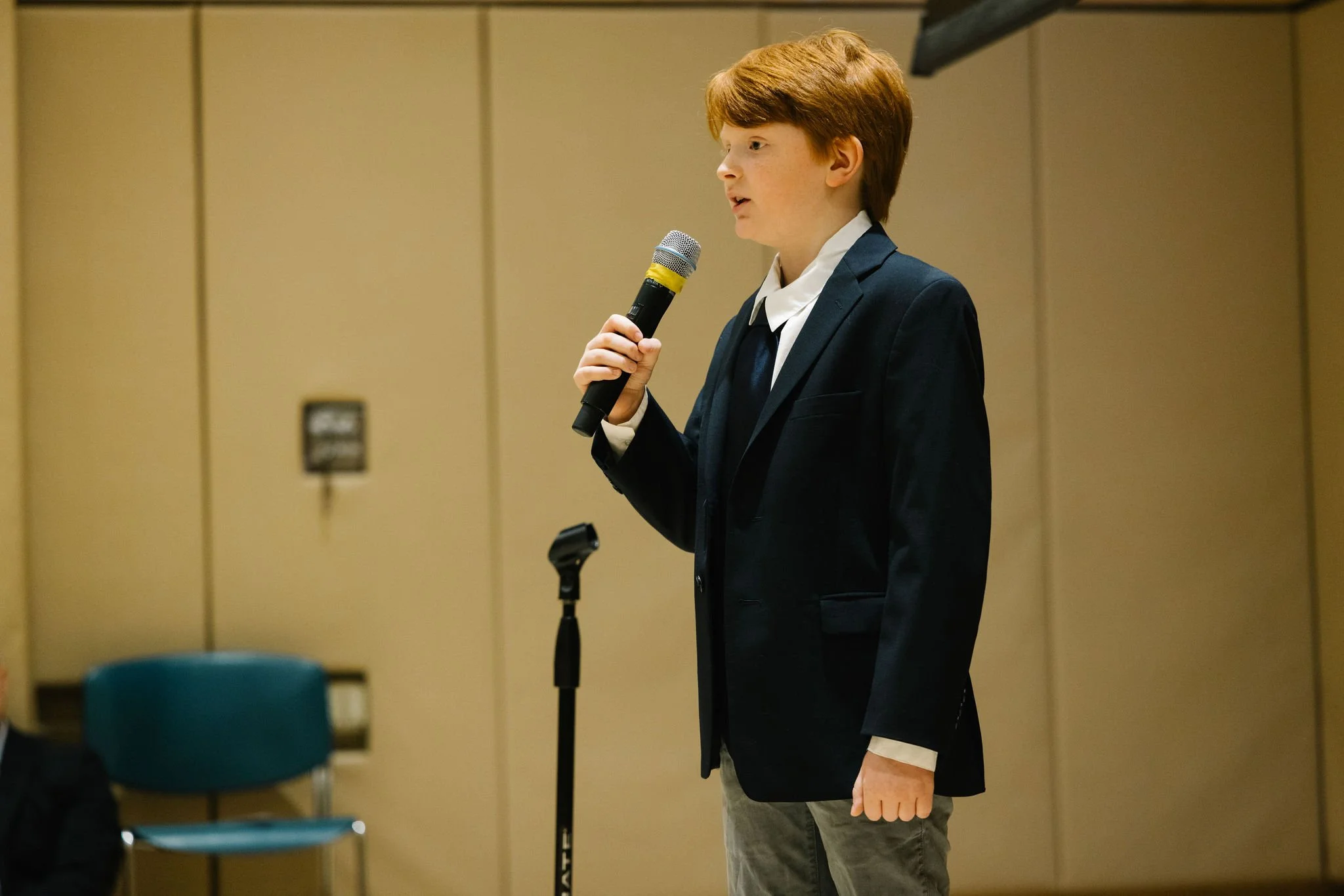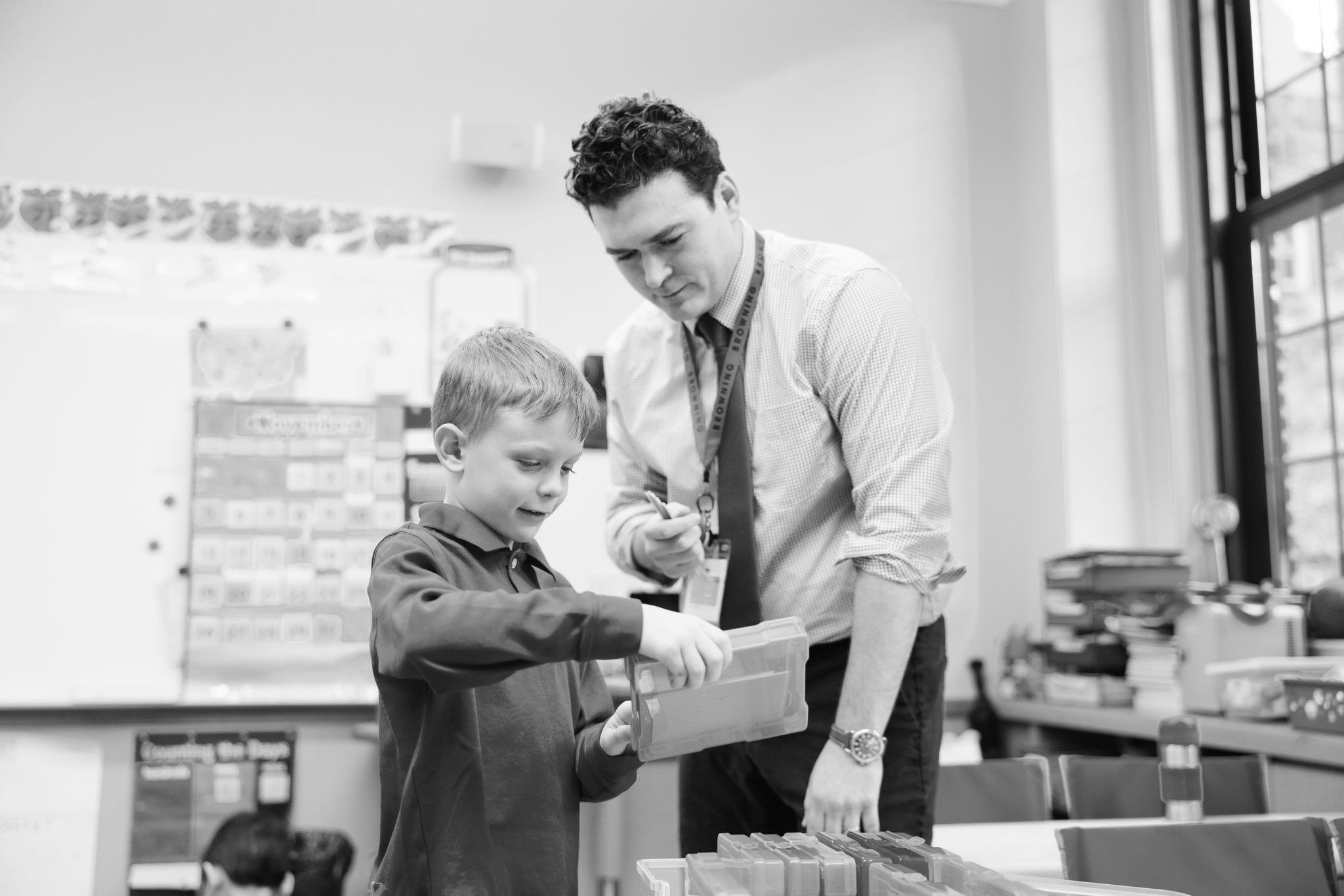Kindergarten
The kindergarten program focuses on beginning reading and writing skills, enhancing communication skills, and reading comprehension strategies through daily read-alouds, introductory writing lessons, and small reading groups. A multi-dimensional curriculum of phonics activities, sight word vocabulary, and handwriting development is supported by The Wilson Fundations program and leveled classroom libraries.
Grade One
In first grade, reading is structured to include grade-level books and trade books, which students use during daily small group literacy instruction and independent reading time. They are exposed to a wide variety of literature, including stories, poetry, and nonfiction works, with an intentional focus on Browning values and cultural diversity. Students learn to use syntactic and contextual clues to develop both oral fluency and accurate comprehension. Explicit spelling patterns, phonics, handwriting, capitalization, and punctuation are taught using Wilson Fundations, further enhanced with various multi-sensory activities. Personal narratives and daily journals provide creative writing opportunities, as students begin to learn a process to improve content, grammar, and spelling skills.
Grade Two
In second grade, students explore a wide variety of theme-related books and current authors to promote a love of reading. Comprehensive exercises and small group discussions foster critical thinking and develop students’ ability to make inferences and draw conclusions. Studying authors’ styles, comparing fantasy and reality, and using reference books for research build skills in creative and factual writing. Students have small group reading instruction daily. The Wilson Fundations Program (Level 2) progresses further into the study of word structure. It also reinforces phonemic awareness, spelling and sight words, irregular spellings, prefixes and suffixes. Grammar, sentence structure, and parts of speech are reinforced through written and oral exercises. Writing units include creative story writing, narrative writing, persuasive writing and non-fiction report writing. Grade 2 students learn to brainstorm, organize, edit, and publish their writing.
Grade Three
Grade 3 students increase vocabulary, develop higher thinking skills, and move toward greater fluency and understanding of oral and written language while continuing to develop their love of reading through various literary forms. Creativity, self-motivation, and independence in all areas of reading and writing are emphasized. Students learn the structure and parts of a story or text, and how to read and write non-fiction text. Third-grade boys learn to construct an expository essay, craft fictional narratives based on an author-study, and use writing to communicate their ideas. Correct spelling, punctuation, capitalization, proper grammar, and sentence structure continue to be studied. Writing projects throughout the year allow students to draft, revise, and edit their work.
Grade Four
Fourth grade students read multiple genres that inspire and reflect the Browning values, especially the value of dignity. Novels exhibit a diversity of lived experiences, perspectives and identities. Throughout the year, students engage in independent and whole class reading and discussions, which allow for community building focused upon comprehension of the text. As students develop as writers, they are guided through examples of expository, persuasive, creative, and personal narrative writing. They also learn techniques for incorporating figurative language, robust vocabulary, and varied sentence structures. Students develop a keen sense of spelling, grammar, punctuation, and paragraph development, as well as note taking techniques, as they research and prepare multimedia presentations about the lives of individuals who exemplify our Browning values.























